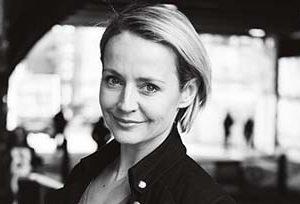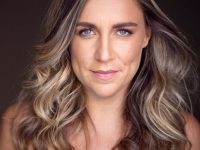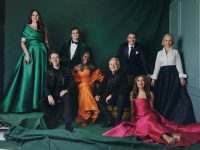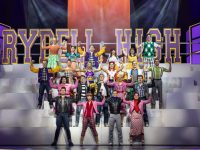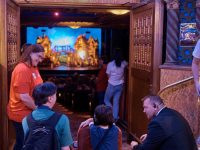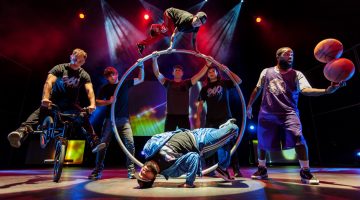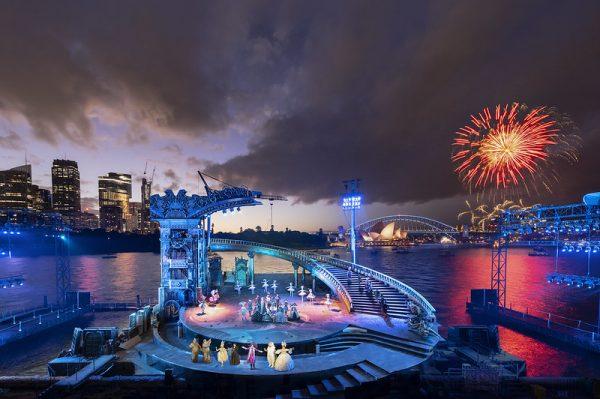
Phantom Choreographer Comes Full Circle With New Production Set on Sydney Harbour
Interview with Simone Sault
Interview and article by Heather Clements
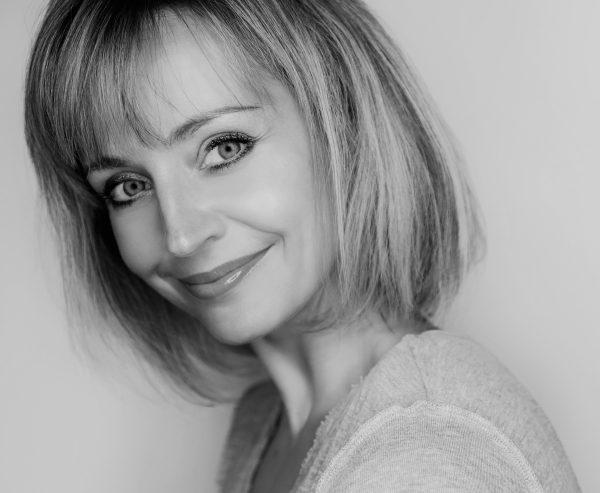
Arguably the world’s most famous musical, The Phantom of the Opera has played a pivotal role in Simone Sault’s life. Melbourne-born Sault had her sights set on a traditional career as a ballet dancer in a major company until she found her voice – literally – and landed a role in the first Australian production of the Andrew Lloyd Webber epic in 1990 at just 18 years of age.
While Simone stayed and matured with the production for several years she did eventually fulfil her dream of joining a dance company in 1999 when invited to join Sydney Dance Company under the artistic direction of Graeme Murphy where she played many feature roles and toured internationally. But her passion for the musical stage was ignited and Simone soon found herself back in the realm of the genre where she forged a career both on and off stage.
Since 2005 Simone has called London home, where she went on to develop her work as a choreographer and director on TV shows, films, events and productions throughout Europe and also in the US as well as become a mother. Now, 30 years after landing her first gig in Phantom in 1990, Simone finds she has come full circle as a professional as she returns ‘home’ to Australia as the choreographer and assistant director on Opera Australia’s new production of The Phantom of the Opera set outside on Sydney’s iconic Harbour.
Heather Clements spoke to Simone earlier this month as rehearsals were starting and the rain poured down, but hopefully Sydney will dazzle as a backdrop to The Phantom of the Opera when it plays from March 25 to April 24.
***
Q: What is your history with The Phantom of the Opera?
It was my first professional job as a dancer. I trained as a classical dancer and always aspired to be in The Australian Ballet or a European ballet company. When The Phantom of the Opera came to Australia it was the halcyon days of the big, mega-musicals and it was the first time I crossed over from ballet to musicals. When I first saw The Phantom of the Opera I realised everyone was singing and communicating but I connected with it just like in a beautiful ballet … the whole idea of being a classically trained dancer but in a musical was very unique back then and I knew I wanted to merge those worlds … the whole concept of opening my mouth and singing a song was new to me because as a dancer your are trained to be seen and never heard.
I first auditioned for the show when it first came to Australia in 1990. I wasn’t a trained singer so I quickly ripped out from the back of a Christmas Carol book the music for ‘Silent Night’ as I was so naïve. It was also the first time I met my still good friends, Joanne Robinson and Lisa O’Dea, who were over from the UK production doing the auditions. My dancing went very well and then they got me to sing with other girls, who ended up getting the job, but I failed the singing audition. I was so out of my depth. They told me to work on my vocal, as they’d be back in contact as soon as there was an available position. Then, about five months later I got a call up when I was ironically working in the Australian Opera ballet, and Guy Simpson, who is now my colleague, auditioned me again and I got the job and was flown straight down to Melbourne to join The Phantom of the Opera!
I went in as a ballet dancer, became the monkey in Masquerade, a soloist and went on the play Meg. So I’ve had a big journey with The Phantom of the Opera and stayed with the company for quite a few years.
It was an amazing stomping group because as a classical dancer you’re in this incredible group of people of all ages, when I was just 18, with these iconic performers from ‘back in the day’. I think it paved the way as to why I am still doing it because I had a great grounding.
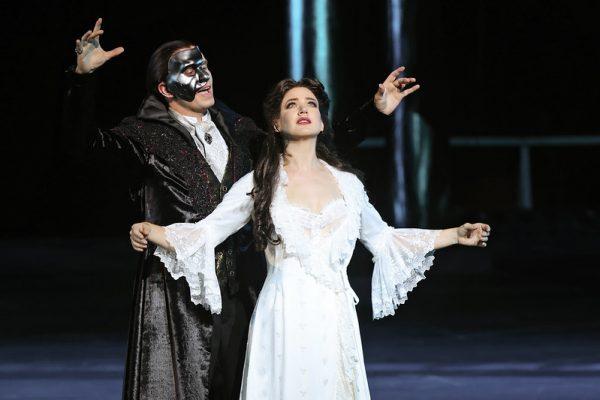
Q: How did you work on your vocals in that time?
I crossed paths with the legendary Rob Guest who was a big star of Les Miserable at the time and told him about my successful audition that my vocals let me down on, but how I desperately wanted to be part of Phantom. He put me in touch with a singing teacher. And then by the time I joined Phantom, Rob had replaced Anthony Warlow as The Phantom, and remained a life-long friend until his passing.
Q: Do you think a classical dancer would have the same opportunity today?
Yes, I do, as long as when they are training they always think outside the box of what it means to be a ‘dancer’. Because where you see yourself now and in the next five years will be very different to what you will actually be doing in ten, and twenty years time. The lifespan as a classical dancer is very short and normally when you’re ready to bow out because your body is tired and you’ve achieved the desired roles, you’re still only in your late 20s! However, as disciplined as you are with your genre, keep thinking about other areas you can work in for longevity in the business, and also look at overseas opportunities for Australian dancers.
Q: What’s it like returning to The Phantom, with which you’ve got such a lovely history?
It’s so glorious I feel like my cup has runneth over because The Phantom of the Opera has always been such a big part of my life and I’ve made life-long friends because of it. This show paved the way, as it is not like other musicals; it is an opera with classical dancers. Having come full circle it feels, in every sense of the word, and literally, like coming home. I couldn’t imagine returning to Australia to work on anything other than The Phantom of the Opera.
Q: What were you looking for when auditioning the dancers for this production?
A strong foundation in classical dance allows you branch out into any other genre of movement, but for this production and the responsibility I’ve taken on, knowing the show and the original so well, I’m not reinventing the wheel, but everything came from such a strong foundation of classical ballet that it was first and foremost what we were looking for. From the moment we stepped into a room we knew if it was too contemporary or too musical theatre … I will always audition people with a very simple combination from the corner so I know that they have a good solid technique that I can then expand on.
It was difficult for me at the time as I was in New York working on another show on Broadway and then staying up until 5am watching auditions, and I must have looked at every single one of the 1200 submissions we receive for The Phantom of the Opera. I know what it’s like to have 90 seconds to make an impression and I look for something that’s not necessarily the highest leg or fastest turn, but somebody that is ready to be seen and, that, character-wise they know who they are and I can explore that in the rehearsal room. I just wanted to go for real people in a modern version of this show … to bring your authentic self into the room and then we can create magic.
I was very impressed with what I saw in the auditions. The talent is here in Australia … the energy, expectation, want, and desire is here … Australia just wants more regular platforms for dancers here. Especially for dancers who don’t want to join a company or go into straight musical theatre, that’s why the The Phantom of the Opera opportunity was a blessing for these cross-over dancers starting out.
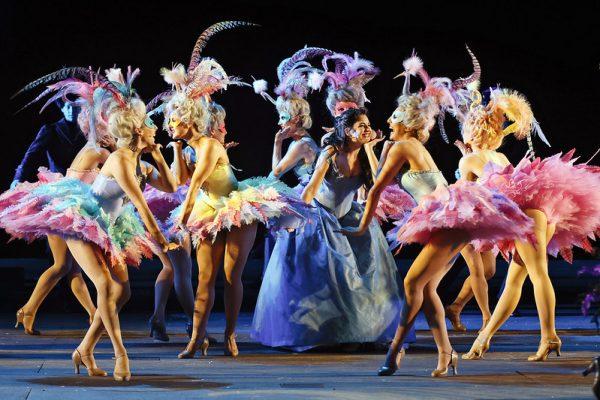
Q: So what is the dance cast like in this new production?
When we had our ‘meet and greet’ I was surprised that for the majority of the female dancers this is their first professional gig. They were very excited. I told them that in ten years time they will probably realise how blessed they are to come into this production for their first job on The Phantom of the Opera because it sets such a high standard.
Read our article on the cast announcements for The Phantom of the Opera here
Q: Is this the first time you’ve worked on a production staged outside?
It’s my first musical staged outside. When I was with Sydney Dance Company we did a lot of international touring where many shows were held in outside arenas and venues, especially in Europe. Then as a creative I’ve worked quite a few times on large scale ceremonies outside such as on the choreographic team for the London Olympics in 2012 and also the Winter Olympics in Russia and Glasgow. So, even though I am used to those large scale events, interpreting the narrative on The Phantom of the Opera is very different. It not only has to be a spectacle but there has to be a reason for every element because at the core is a love story.
Q: What have been the challenges for you to work a production on this scale, still in the confines of a stage?
The biggest battle for us is to work out the entrances and exits, because we don’t have the luxury of wings. And also the quick changes and timings and working out how long it will take a particular group to come from the dressing rooms to the stage and factoring that into the numbers. So that, by far, has been the biggest journey for us as a cast.
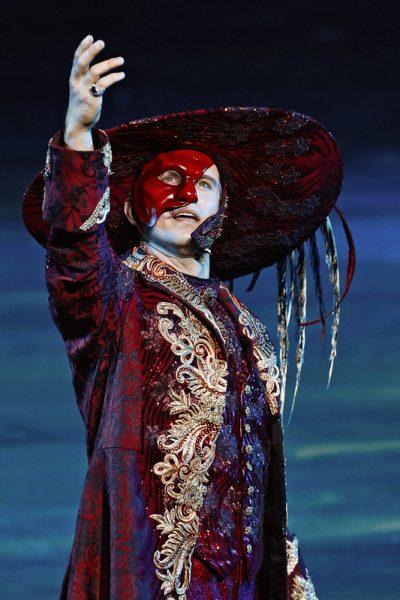
Q: It’s a large cast as well, but I guess you need that to fill the stage?
Yes, there are around 46-48 people in the cast. When you see it all together it becomes a reality. We are rehearsing at the moment in a huge basketball court and we don’t even touch the sides! It’s a world unto itself and I feel so blessed to have 14 incredible female dancers and 8 beautifully burly male dancers that can swing a leg as well.
Q: What has your preparation as the choreographer been like?
My preparation started before I went to New York because I knew I had another show to work on and wouldn’t have a lot of time. It was my movement for the show that people submitted for the second round of auditions, so that saved a lot of time with the cast we assembled as they had that in their memories banks. And then I’ve been working up until the official rehearsal start date with a couple of the contracted dancers who were willingly wanting to be in the room with me while I’ve been creating for the show. There’s a rough shape forming with all my original choreography, the dancers are really quick and I have a beautiful relationship with the director, Simon Phillips, as we bring this show together.
Q: Is the staging and costuming still in keeping with the original The Phantom of the Opera?
No, they’re completely different. From the get-go we have created a brand new world. Nothing is visually reminiscent of the original, and choreographically I have double the dancers to work on with my very own movement. And I love that it comes form a classical background that is earthy and mature.
Q: What is your origin dance story as a little girl in Australia?
I have an older sister and younger brother, who have nothing to do with the arts whatsoever, but I remember being about 5 years old and having this absolute love affair with music as a child … from the moment I heard it I was always moving. Thankfully, my parents saw this and asked me if I wanted to do dance classes as I had been badgering them for ages. From the moment I got permission, I never swayed from my love of dance. It was like I had blinkers on and classical ballet and physicalising story telling for me was my happy place. I’m just so very lucky my parents put me into an incredible ballet school as a child at seven, with the National Theatre Ballet School in Melbourne, with great mentors from The Australian Ballet. I was awarded a scholarship to study ballet full-time at 13 … it’s a good thing it worked out!
It was always ballet for me then, and telling stories through physical movement. It wasn’t until my parents randomly bought me tickets to see Les Miserable for my seventeenth birthday that my eyes were opened. I was four rows from the front. It was the level of connection with the audience and the way it communicated with me that made the penny drop, and I realised there was more than just classical ballet. It was also the first time I met Rob Guest performing in that show. I think that was what planted the seed in my mind, even after I was in Phantom, that I wanted to be in a ballet/dance company telling stories. And nothing was going to sway me from that. Even when I was in my first musical and earning money, I was still going to class every day. I also knew that one day I would like to cross over (to creative), because I’ve always been greedy to know more, and when I’m in a room with creative people I never want to stop learning.
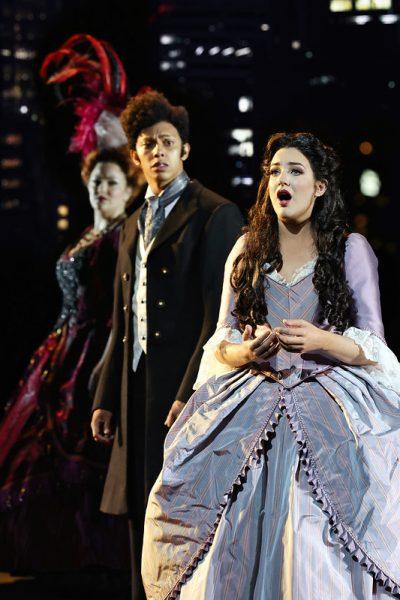
Q: Have you enjoyed the transition from performer to creative? Was it a natural progression or was it a conscious decision?
Luck was on my side, and it happened very naturally. Calling London home for the past 16 years has meant there was a lot of film and TV work for dance creatives, and not so much of the 8-shows-week contracts, which worked for me having a child and being older. As a dancer and in your prime of life your mind is still active and you want to dip in where you can. As you get older you tick off the roles and experiences and start to see the bigger picture; like developing people skills and collaborating with people. For me it felt like a natural progression. I love that it doesn’t seem long ago that I was on the other side of the table and hoping I was worthy in an audition. I love bridging the gap of knowing the feeling of being on both sides and knowing its either going to go your way on the day, or not. At the end of the day it’s a business. So that’s how I tend to run rooms and auditions. There’s no power play from me now that I’ve crossed over.
Q: What is your advice to aspiring Australian dancers?
Train here because Australian dance training is second to none. However, set your sights on working abroad, because there’s a 99% chance that when you’re ready to return Australia will always welcome you back with open arms. You only get one crack at it … so go out and do it! Even with my experience of almost 20 years and coming back home to stage this production of The Phantom of the Opera I think I would’ve done it very differently if I hadn’t lived overseas and had those experiences. I’ve had amazing experiences and influences form companies, directors and choreographers from around the world that I wouldn’t have had if I had stayed living and working here.
Q: Finally, what should people expect and why should they come and see this spectacular on Sydney Harbour?
They should expect an experience like absolutely no other. It is pure escapism, yet at the epicentre is a classic love story that resonates with each and every person either in the audience or onstage that says: we connect. We all know that one love or one person where we don’t trust ourselves alone with them. It communicates through an incredible, ageless, evergreen score presented with the backdrop of the Harbour Bridge, Opera House and Sydney skies … I think it will be the highlight of my life! It’s the first show I’ve done in Australia since I was first in The Phantom of the Opera and I cannot wait for it to happen.
***
THE PHANTOM OF THE OPERA – Handa Opera on Sydney Harbour
SYDNEY – Fleet Steps, Mrs Macquarie’s Point
25 March – 24 April 2022
Bookings: www.opera.org.au
***

